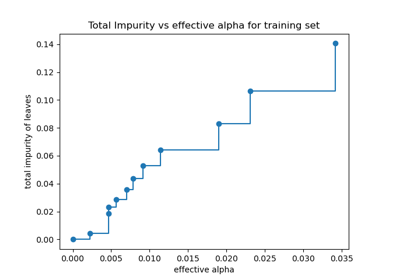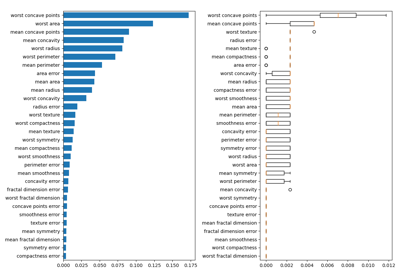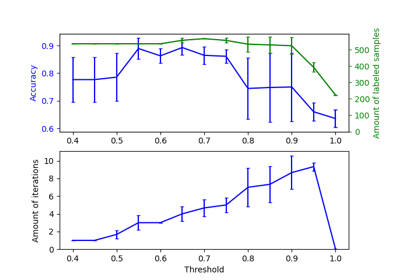sklearn.datasets.load_breast_cancer¶
-
sklearn.datasets.load_breast_cancer(*, return_X_y=False, as_frame=False)[source]¶ Load and return the breast cancer wisconsin dataset (classification).
The breast cancer dataset is a classic and very easy binary classification dataset.
Classes
2
Samples per class
212(M),357(B)
Samples total
569
Dimensionality
30
Features
real, positive
Read more in the User Guide.
- Parameters
- return_X_ybool, default=False
If True, returns
(data, target)instead of a Bunch object. See below for more information about thedataandtargetobject.New in version 0.18.
- as_framebool, default=False
If True, the data is a pandas DataFrame including columns with appropriate dtypes (numeric). The target is a pandas DataFrame or Series depending on the number of target columns. If
return_X_yis True, then (data,target) will be pandas DataFrames or Series as described below.New in version 0.23.
- Returns
- data
Bunch Dictionary-like object, with the following attributes.
- data{ndarray, dataframe} of shape (569, 30)
The data matrix. If
as_frame=True,datawill be a pandas DataFrame.- target: {ndarray, Series} of shape (569,)
The classification target. If
as_frame=True,targetwill be a pandas Series.- feature_names: list
The names of the dataset columns.
- target_names: list
The names of target classes.
- frame: DataFrame of shape (569, 31)
Only present when
as_frame=True. DataFrame withdataandtarget.New in version 0.23.
- DESCR: str
The full description of the dataset.
- filename: str
The path to the location of the data.
New in version 0.20.
- (data, target)tuple if
return_X_yis True New in version 0.18.
- The copy of UCI ML Breast Cancer Wisconsin (Diagnostic) dataset is
- downloaded from:
- https://goo.gl/U2Uwz2
- data
Examples
Let’s say you are interested in the samples 10, 50, and 85, and want to know their class name.
>>> from sklearn.datasets import load_breast_cancer >>> data = load_breast_cancer() >>> data.target[[10, 50, 85]] array([0, 1, 0]) >>> list(data.target_names) ['malignant', 'benign']



